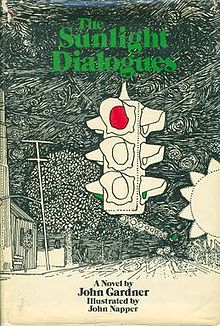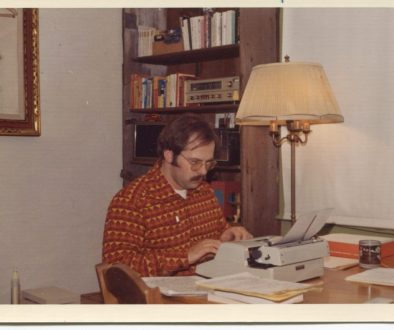From Classic to Contemporary, Part Deux:
John Gardner’s
“The Sunlight Dialogues”
Since we began exploring (last week) works that represent the profound transformation of American literary fiction, which helped set the 1960s and ‘70s afire (and, lest we forget, the earlier influence of Jack Kerouac and the Beat Generation of the 1950s had on the ‘60s), let’s take a look at John Gardner’s The Sunlight Dialogues.

The story of the Sunlight Man at odds with Clumly, the Batavia, New York, Chief of Police, represents a classic struggle between good and evil . . . except Gardner sends the main characters to the literary stage without portraying either man as one or the other. This is a big book, 722 pages, and Gardner takes his time peeling back the layers of life that have shaped Sunlight and Clumly and brought them into their archetypal confrontation: the dialogues of the title.
He does so by masquerading the novel as a family epic – think William Faulkner and his Yoknapatawpha County or Lalita Tademy’s Cane River –when in fact it’s a classic power struggle between marginal figures in a fictional microcosm. The novel is filled with sorrow, despair, unfulfilled promises and often unrequited desire. The stuff of a small town and classical Catholicism. Nobody wins, ever, ever, ever.
Gardner’s Sunlight Dialogues shared the existential nihilism of the 1960s and ‘70s with good literary company: Joan Didion’s Play It As It Lays, Richard Fariña’s Been Down So Long It Looks Like Up to Me, Thomas Sanchez’s tragic Rabbit Boss, the utterly engrossing One Hundred Years of Solitude by Gabriel Garcia Marquez, Gerry Rosen’s Blues for a Dying Nation, and of course Joseph Heller’s Catch-22.
Were these works influenced, either directly or indirectly, by the Vietnam War? Of course they were. But they were also the stepchildren of deconstruction, a literary theory put forth by Jacques Derrida as works that elude meaning. Yet isn’t the quest for meaning the prime directive of literature? Yes, it is, in ways that music (think Schopenhauer) or art (think Picasso) are not or choose not to be. In any event, storytelling broke free of the formulaic confines of a straightforward story in which Good and Right always prevail unto happy, or at least satisfying, conclusions.
And so, as Gardner warps his classical struggle between amorphous good and amorphous evil, he gives a decidedly metaphysical twist to his earlier novel Grendel, his retelling of the ancient Gilgamesh Epic, in which the man-god Beowulf slays the monster Grendel – but told from the monster’s point of view. Aw, read ‘em both. They make for two diametric perspectives on a great theme.




